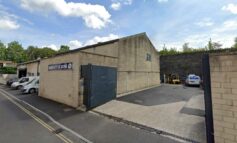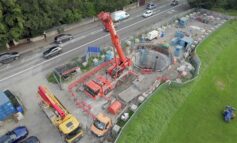Office space in Bath continues to be in high demand but the market is hampered by an acute lack of supply, according to leading commercial property consultancy Lambert Smith Hampton (LSH).

LSH’s latest South West Office Market Report says demand in the city has remained above the 10-year average of 65,000 sq ft per annum in each of the past five years.
During 2016, there was a strong take-up of 80,136 sq ft, largely due to the letting of 20 Manvers Street, a refurbished building that provides 45,136 sq ft of high spec office space over six floors.
A new fourth floor extension will be ready for occupation in the first half of 2017.
Peter Musgrove, head of office at LSH in Bristol, said: “This was the most significant deal in the city last year, and the building has been let in its entirety to two tenants, Chase de Vere and Parragon.”
Supply scarcity has now become acute in Bath, he added, with availability standing at less than a third of its level five years ago.
“Supply has been steadily eroded in recent years, falling from 360,000 sq ft in 2011 to just 55,000 sq ft. Around 100,000 sq ft of office stock has been lost to alternative use through permitted development (PD) rights, and following the completion of the Manvers Street transaction, current availability levels in Bath – based on historic take-up levels – represent a mere nine months of supply.”
Bath’s Enterprise Area is one key focus of potential development, with the development of Bath Quays North and South, where preparatory and first stage flood defence works are now underway.
There is additional new office space planned at 1 Pinesgate, where 113,000 sq ft of new office space has received outline planning approval, along with a new international college campus.
However, the report said that the development of new office buildings in key South West locations was urgently needed if the region is to continue to attract investment and jobs from major businesses.
Commenting, Peter said that with the lack of good quality office space now reaching critical levels, it was time to see cranes return to the region’s skyline.
“The South West office market has changed dramatically over the last three years, as the Government’s relaxation of Permitted Development Rights (PD) has removed a significant amount of obsolete stock from the market,” he said.
“Buildings in prime locations have been lost for good to the residential and student market, leading to shrinking supply and rent increases. In other regions, such as the South East, PD has led to increasing speculative development, but there is little evidence of new offices being built in the South West.”
One of the main reasons for a lack of development in other regional centres, such as Plymouth and Gloucester, he added, was increasing construction costs and the fact that the rent in many locations does not justify speculative build.
“Occupiers are demanding high quality space that will retain staff in a competitive market, but to do this, occupiers need to realise they have to pay a higher rent and take longer leases,” he said.
The main focus of potential development activity is in the primary market of Bristol, although there are a number of regeneration schemes across the region, which may also serve to increase the supply of grade A space, the report stated.



